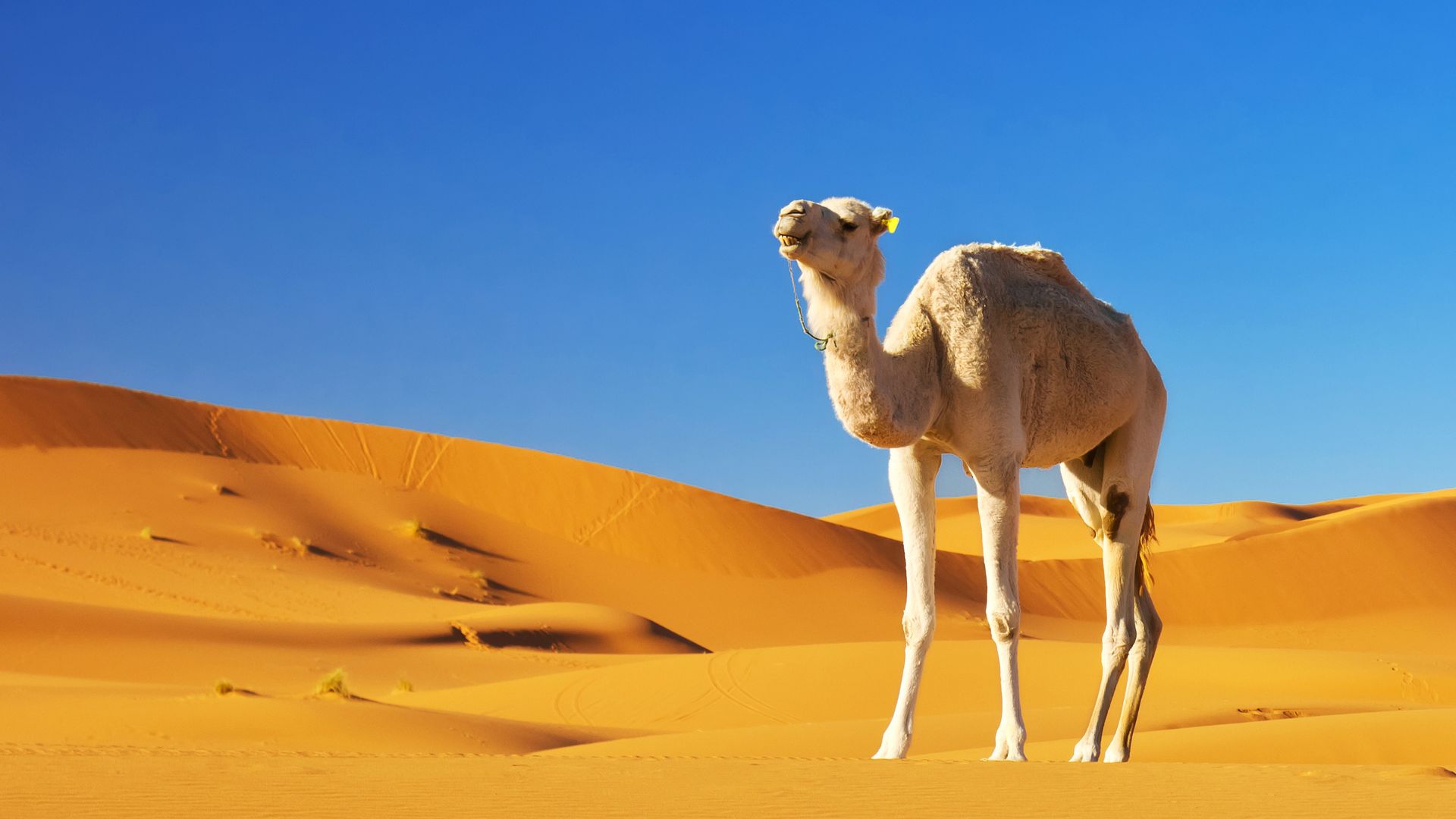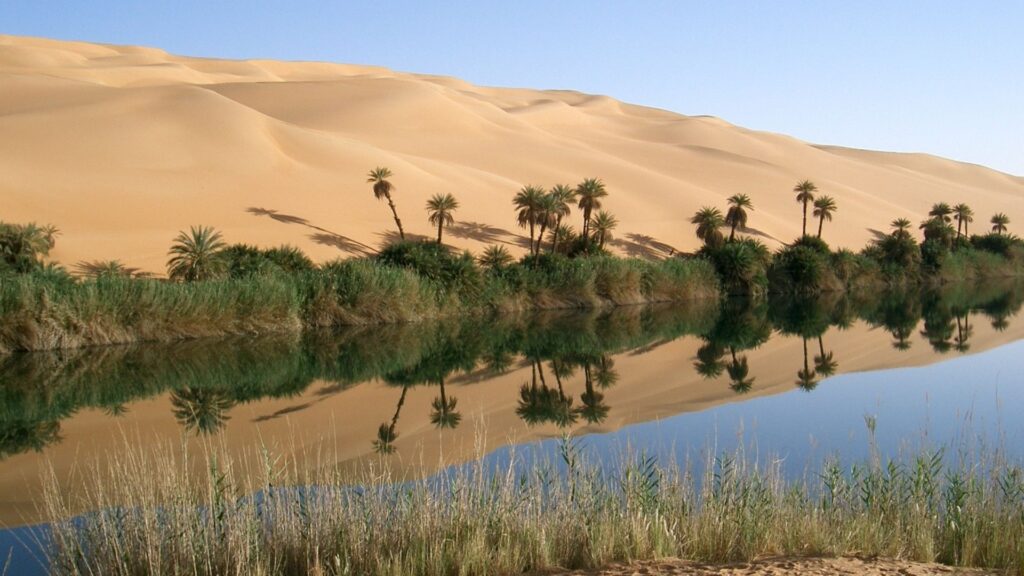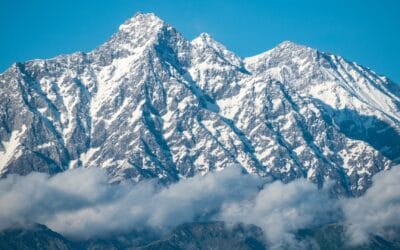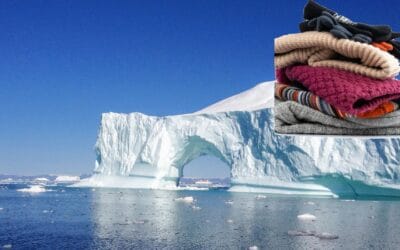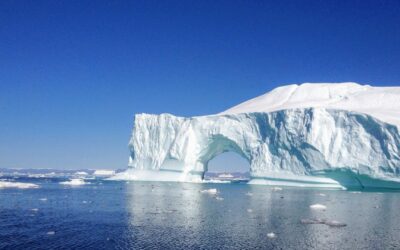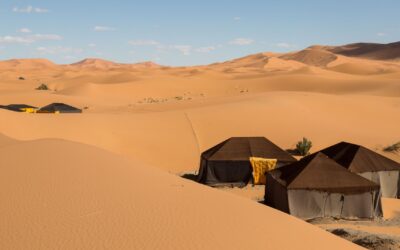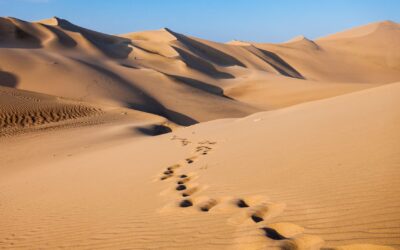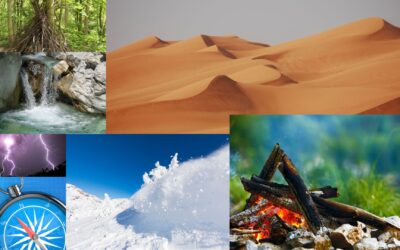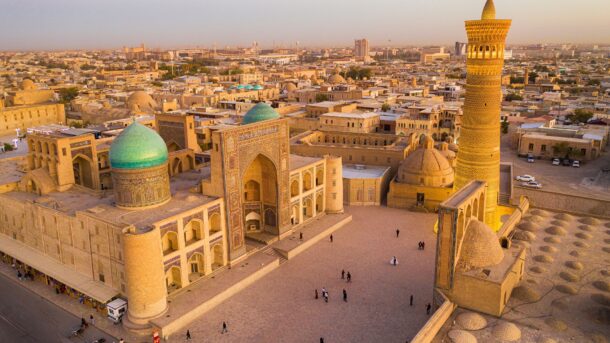Let’s say you find yourself (voluntarily or not) in a place where there’s nothing for miles and miles, except for desert plants, dry sand, and heat. We call such a place a hot desert – an area that receives less than 25 cm (10 in) of precipitation annually. No matter how fun you might find this experience, it’s best to keep in mind that these sandy and rocky lands are quite hostile to most life forms – including you. Here are some desert survival tips that could come in handy while trekking a beautiful yet challenging hot desert.
Let’s start with a good definition of “hot desert”
When many people think of a desert, they often envision vast stretches of sand dunes under a scorching sun. Perhaps so do you. However, the technical definition of a desert is fairly different. A place is technically a desert if it receives less than 250 mm (10 in) of rain per year. With this definition, we have two main types of deserts: hot deserts and cold deserts.
Hot deserts are those arid places where the daytime temperatures can soar well above 40°C (104°F). These deserts also experience significant temperature drops at night. The landscape of hot deserts often includes sand dunes, rocky plateaus, and barren, sun-baked terrain. Examples include the Sahara Desert in Africa, the Arabian Desert in the Middle East, and the Mojave Desert in North America.
Cold deserts are those places with low temperatures for most of the year that also receive minimal precipitation, primarily in the form of snow. The landscape is typically dominated by rocky and icy terrain rather than sand. Examples include the Gobi Desert in Asia and the Great Basin Desert in North America. That being said, the most notable examples of cold deserts are the polar regions such as Antarctica. You got that right, Antarctica is a desert! In fact, with 14.2 million sq km (5.5 million sq mi), Antarctica is the largest desert on the planet! And if you plan to explore a cold desert, consider checking out our guide on how to survive in an Arctic environment.
Part 1: Preparing for desert emergencies
Wear clothing that minimizes sweat loss
Hot deserts tend to have significant temperature fluctuations between day and night and wearing the right clothing can make a huge difference. Start with loose, lightweight clothing. Cover as much skin as possible to trap sweat and slow evaporation. Remember, looking like a mummy might be your best bet! Loose clothing allows air to circulate and helps keep you cooler.
Opt for a cotton undershirt instead of a wicking fabric. Cotton holds sweat close to your body, reducing evaporation and helping keep you cool. Add a light windbreaker to protect against the sun and reduce sweat loss. It might sound counterintuitive to add layers, but it actually helps trap moisture and protect from the harsh sun.
Equip yourself with a wide-brimmed hat, sunglasses, and gloves. You’ll look like a desert explorer and protect yourself from sun exposure. A wide-brimmed hat provides shade for your face and neck, reducing the risk of sunburn.
Pack wool or fleece clothing for the night. Deserts can get extremely cold at night, and having warmer clothing can prevent hypothermia. Nights can be colder than your ex’s heart, so be prepared.
Choose light-colored clothing with a UPF (Ultraviolet Protection Factor). Light colors reflect heat, and a UPF of 30+ protects from UV rays. Dark clothing might seem counterproductive, but it can protect better against UV rays if it has a high UPF rating.
If you feel like these pieces of advice are not detailed enough, check out our full guide on how to dress in a hot desert.
Bring lots of extra water
Unless you’ve just been born, you likely know that hot deserts are not the place to find water in abundance. For this reason, whenever you can, consider bringing more water than you typically need. The average person loses 900 mL of sweat per hour in 40ºC (104ºF) heat. You don’t want to turn into a raisin. It’s better to have more than you need than to run out.
It’s a good idea to divide water among several containers to minimize loss from a single leak. If one container breaks, you won’t lose all your water. Store water in a cool spot, keeping it away from direct sunlight to prevent evaporation and to keep it as cool as possible.
Plan for at least one gallon of water per person per day. This does not account for other needs like cooking or hygiene. In extreme conditions, you may need even more.
Bring food with high nutrition and low weight
Food options you might wanna take with you include energy bars, pemmican, jerky, and trail mix. These foods are high in nutrition and easy to carry. Duh.
Include foods with salt and potassium to help avoid heat exhaustion and retain more water. Salt helps your body retain water, while potassium plays an important role in muscle function and preventing cramps. Eat minimally if out of water because food increases water needs. If you’re out of water, eating can worsen dehydration.
Pack survival equipment
Your survival kit could include sturdy emergency blankets that provide warmth and can be used for shelter. Cords or rope can also come in handy, as they are useful for building shelters or making repairs.
Deserts are not completely water-free. As such, it’s useful to have water purification tablets that ensure almost any found water is safe to drink. Given the difficulty of predicting and preventing all injuries, you’ll also want a first aid kit. To keep yourself warm at night or send signals if needed, also bring fire starters.
Speaking of signaling, take a powerful flashlight or headlamp with you, preferably with LEDs. A flashlight would also help you navigate at night. Speaking of navigation, don’t forget to bring a mechanical compass if you suspect it may come in handy. Returning to signaling tools, consider bringing a signal mirror, which reflects sunlight to attract the attention of others.
Part 2: Survival tactics
Become nocturnal
Sounds intriguing, right? If you have to, travel at night when the temperatures are cooler, reducing water loss and the risk of heat exhaustion. Plus, it’s a great time to stargaze! Moving at night helps you stay cooler and conserve energy.
During the day, find shade and rest to avoid the heat. Use this time to conserve energy and stay hydrated. Staying out of the sun can significantly reduce your risk of heatstroke and dehydration.
Stay in a shelter during the day
If the situation demands it, build a shelter with emergency blankets. Use a sturdy emergency blanket draped over cords to create shade. Place a brush or other natural materials on top for additional insulation. This can help keep the shelter cooler by creating an air gap between the layers.
Look for natural shelters like rock overhangs or caves, but approach cautiously as animals might be using them. Construct your shelter in the evening or at night to avoid trapping heat inside. This ensures your shelter remains cooler during the hottest parts of the day.
Consider checking out our guide on how to build a shelter in a hot desert.
Learn how to signal for help
When you prepare yourself for survival situations, you need to learn how to signal for help. For example, did you know building fires at night can be an effective signaling strategy, as they are visible from a distance? In addition, they can deter nocturnal predators.
As already mentioned, signal mirrors can come in handy because the reflected sunlight draws attention. To be more specific, signal mirrors can reflect light over great distances, which makes them an effective tool for catching the eye of aircraft or distant rescuers.
Another signaling strategy that is often depicted in movies is creating large SOS signs using rocks, sticks, or any available materials to spell out SOS or another distress signal on the ground. Ensure the message is large enough to be seen from the air.
Decide whether to stay in place
If you are actually stuck in an unwanted situation, stay if you have water and someone knows your location. Staying in one place increases your chances of being found if relevant others know where to look. It also conserves energy and water.
Move if water is low. If you run out of water, you’ll need to search for more. Plan your movements carefully to avoid excessive exertion during the hottest parts of the day.
Find water sources
Whether you are actually lost or just challenging yourself in a desert, look for recent rain pockets in rock outcrops or flat surfaces where water might be trapped after rainfall.
Search for greenery and animal tracks as vegetation and animal activity often indicate the presence of water. Follow these signs to potential water sources.
Dig in low areas or near vegetation. Digging in dry riverbeds, low-lying areas, or near plants can sometimes reveal groundwater. When you find a potential water source, dig about 30 cm (12 in) down. Look for moisture and allow the hole to fill with water. Digging can be hard work, but it can reveal water supplies.
Another strategy is to collect morning dew using an absorbent cloth to gather dew from plants and squeeze it into a container. This can provide small but vital amounts of water. Search hollow tree trunks and under rocks. Turn over rocks before dawn to find condensation. Hollow trees can also store small amounts of water.
Purify water if possible. Use water purification tablets or boil the water to ensure it’s safe to drink. Even if you don’t have purification tools, drinking small amounts of unpurified water is better than severe dehydration.
An oasis in the Libyan Sahara
Part 3: Recognizing dangers
Watch out for signs of dehydration
Symptoms of dehydration include dark urine, dry skin, dizziness, and fainting. These signs indicate that your body is running low on fluids and needs immediate rehydration. Drink water immediately if dehydrated. Rationing can be dangerous. Many people have made the mistake of trying to conserve water too strictly, leading to severe dehydration. If you have water, drink it when you need it.
Rest if you experience heat exhaustion
Heat exhaustion is another danger to watch for. Symptoms include lightheadedness, nausea, and cool and clammy skin. Heat exhaustion can quickly progress to heatstroke, which is very dangerous. Treat by resting in shade, loosening clothing, sipping salty water, and applying wet cloths. Cooling down your body is critical to prevent heatstroke. If you don’t have sports drinks, dissolve a small amount of salt in water to replenish lost electrolytes.
Stay away from dangerous animals
As you might suspect, you need to be very cautious of snakes, scorpions, and spiders. Check areas before resting as many desert creatures are more active at night when temperatures are cooler. Avoid reaching into hidden spaces. Use a stick to check first as scorpions and snakes often hide under rocks and in crevices to escape the heat.
Stay alert in regions with venomous snakes and other hazardous wildlife. Wear protective clothing and always check your gear before use.
Steer clear of spiny plants
Avoid contact with cacti and other spiny plants to prevent injury and infection. Cacti can have long, sharp spines that can easily pierce skin and clothing. Watch for scattered spiky burrs as some plants use them to spread seeds. These can attach to your clothing and cause irritation or injury. You really don’t need a puncture wound that can become infected.
Prepare for flash floods
Despite the dry conditions, flash floods can occur suddenly and are extremely dangerous in desert environments. Stay on high ground. Avoid camping in dry riverbeds or low-lying areas, as these can quickly fill with water during a flash flood.
Monitor weather conditions. Be aware of potential rainstorms that can trigger flash floods. Having a battery-powered weather radio can help you stay informed. Plan an escape route before settling in any area. Identify the nearest high ground and plan how to get there quickly if necessary.
Prepare for sand storms
If you see the sandstorm on the horizon, head in the opposite direction and try to maneuver around the storm. If you do get caught in the sandstorm and there’s no proper shelter around, find the nearest big landform, such as a rock, and take shelter by the side of it. If you are in a large group, it may be necessary to link arms to keep together and prevent anyone from getting separated.
If you don’t have eye or mouth protection, wet a cloth and tie it around your mouth and nose to prevent sand and dust particles from entering your lungs, then try to breathe as normally as possible. You may need another piece of cloth to tie around your eyes and ears.
Befriend a camel
Finally, if you find yourself in a place where camels roam, consider making a camel friend Here’s how to do it:
- Approach Calmly: Camels can be wary of strangers. Don’t run up yelling “I’m your new best friend!” Calmly approach to avoid startling the camel.
- Offer Food and Water: Camels love treats. Offering some suitable food can go a long way in gaining their trust. If you have extra water, share it. Camels can go without water for long periods, but they’ll appreciate the gesture.
- Use Gentle Communication: Camels appreciate a kind word. Avoid screaming at them like they’re your WiFi router. Speak in a calm, soothing voice to build a rapport.
- Establish a Routine: Spend time with the camel regularly. They might just think you’re their new best buddy with snacks. Consistency will help you gain their trust.
Note that camels are strong animals and approaching them randomly can be dangerous. If you are to befriend a camel, do it in the company of someone who knows how to interact with them and can guide you.
Bottom Line: Hot deserts are among the Earth’s most challenging environments
Trekking a hot desert can be beautifully challenging. It’s not just the scorching heat that gets you; it’s the whole package deal of sand in every nook and cranny, cacti that seem to have a personal vendetta, and those sneaky critters that make you jump higher than a kangaroo.
Having the right knowledge and skills can make a big difference in how much fun you will have. More importantly, knowledge and practice of survival skills for trekkers can help you cope with any unforeseen situation. And who knows, maybe you’ll also make a new friend in the form of a camel.

